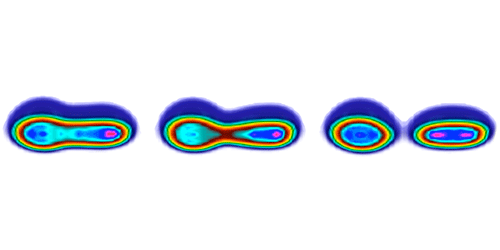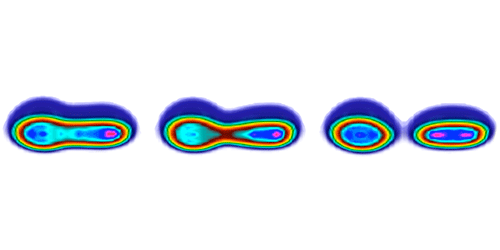Fission Takes Its Time
Harnessing the power of nuclear fission was one of the most significant breakthroughs of modern science. And yet, surprisingly, the microscopic details of the fission process are poorly understood. New numerical simulations that treat the nucleus like a superfluid capture the dynamics of a fracturing plutonium nucleus without assuming any of the conditions that other fission models have required. The results of the simulations show that the final stage of the fission process lasts 10 times longer than previously calculated.
Nuclear fission is a complex many body problem, involving over 200 nucleons packed in a highly deformed nucleus. Current modeling methods typically rely on density-functional theory (DFT), which looks at the evolution of the nuclear density, rather than particle wave functions. But to date, most DFT models of fission have only worked by imposing certain constraints, such as axial symmetry or adiabatic energy evolution.
Aurel Bulgac from the University of Washington, Seattle, and colleagues developed a more generic model of fission based on a superfluid DFT framework, in which the protons and neutrons pair up (like the electrons in a superconductor). This superfluid model gives accurate predictions for many nuclear phenomena, as shown in previous work, but this is the first time it has been applied to fission. The team’s simulations, performed on the Titan supercomputer at Oak Ridge National Lab in Tennessee, track the final stage of the process, when the two daughter nuclei rip apart. The predicted kinetic energies of the fission fragments were consistent with experimental observations. However, the fragments remained in contact longer than expected from previous theoretical estimates. The new simulations could improve models of neutron and gamma-ray emission from the fragments.
This research is published in Physical Review Letters
–Michael Schirber





